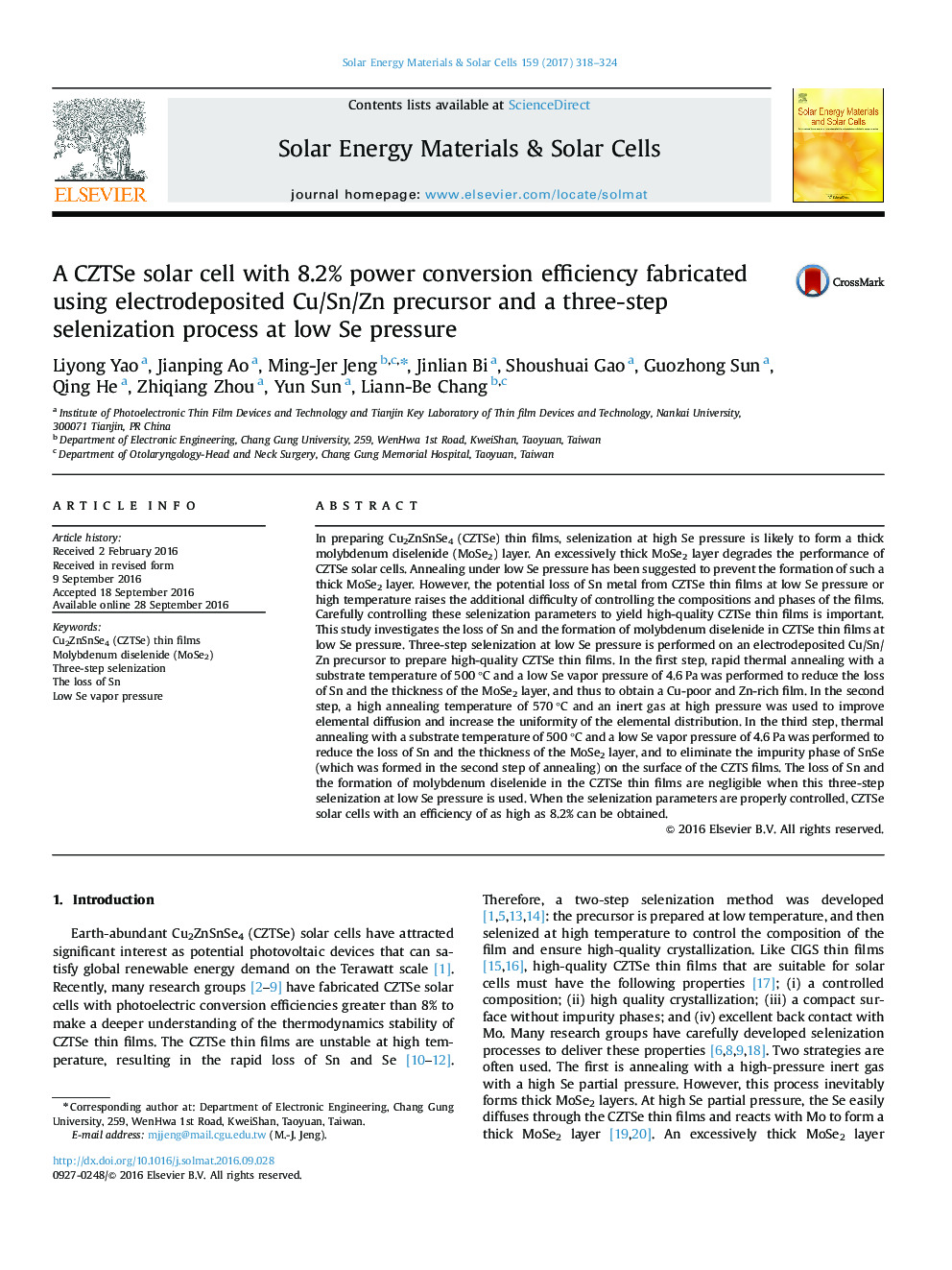| کد مقاله | کد نشریه | سال انتشار | مقاله انگلیسی | نسخه تمام متن |
|---|---|---|---|---|
| 6457512 | 1420664 | 2017 | 7 صفحه PDF | دانلود رایگان |

- Three-step selenization at low Se pressure is performed on an electrodeposited Cu/Sn/Zn precursor.
- No chemical etching is required before CdS deposition.
- The loss of Sn and the formation of molybdenum diselenide in the CZTSe thin films are negligible.
- CZTSe solar cells with an efficiency of as high as 8.2% can be obtained.
In preparing Cu2ZnSnSe4 (CZTSe) thin films, selenization at high Se pressure is likely to form a thick molybdenum diselenide (MoSe2) layer. An excessively thick MoSe2 layer degrades the performance of CZTSe solar cells. Annealing under low Se pressure has been suggested to prevent the formation of such a thick MoSe2 layer. However, the potential loss of Sn metal from CZTSe thin films at low Se pressure or high temperature raises the additional difficulty of controlling the compositions and phases of the films. Carefully controlling these selenization parameters to yield high-quality CZTSe thin films is important. This study investigates the loss of Sn and the formation of molybdenum diselenide in CZTSe thin films at low Se pressure. Three-step selenization at low Se pressure is performed on an electrodeposited Cu/Sn/Zn precursor to prepare high-quality CZTSe thin films. In the first step, rapid thermal annealing with a substrate temperature of 500 °C and a low Se vapor pressure of 4.6 Pa was performed to reduce the loss of Sn and the thickness of the MoSe2 layer, and thus to obtain a Cu-poor and Zn-rich film. In the second step, a high annealing temperature of 570 °C and an inert gas at high pressure was used to improve elemental diffusion and increase the uniformity of the elemental distribution. In the third step, thermal annealing with a substrate temperature of 500 °C and a low Se vapor pressure of 4.6 Pa was performed to reduce the loss of Sn and the thickness of the MoSe2 layer, and to eliminate the impurity phase of SnSe (which was formed in the second step of annealing) on the surface of the CZTS films. The loss of Sn and the formation of molybdenum diselenide in the CZTSe thin films are negligible when this three-step selenization at low Se pressure is used. When the selenization parameters are properly controlled, CZTSe solar cells with an efficiency of as high as 8.2% can be obtained.
Journal: Solar Energy Materials and Solar Cells - Volume 159, January 2017, Pages 318-324